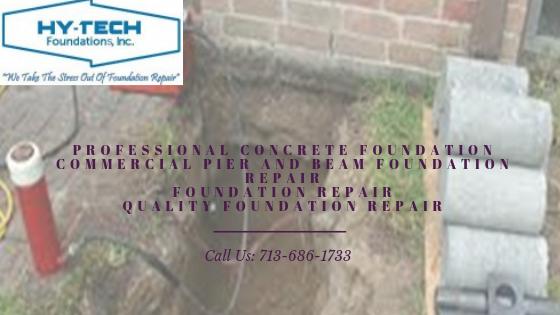Structure of a building relies on its foundation. The anomalies in the foundation are highly unsettling for most of the property owners. It is often worrisome as the foundation is supporting the whole structure and its failure can even result in an untimely collapse.
Foundation failure does not happen in an hour or two but often gives telltale signs of underlying damages. These signs and symptoms must not be ignored. And the only good things about such damages is that they can be repaired.
Thanks to the ongoing researches and technologies available, foundation repair techniques have improved. In case you are worried about any of the symptoms mentioned below hire professional engineers for foundation repair in Houston TX.
Noticeable Foundation Issues
Foundation failure has a lot of visible and invisible symptoms. Let us have a bird’s eye view on the noticeable symptoms.
• Bumpy floors
• Cracked brick walls
• Cracked floor tiles
• Broken ceiling decoration
• Hard to open/close doors
• Separated window and door frames
• Swelling or split in drywall
• Visible cracks in the foundation
• Sagging beams
6 Common Underlying Reasons
Understand the common underlying reasons for foundation failure is crucial. The diagnosis helps is effective management. Professional concrete foundation repair includes inspection and issuing a forensic engineering report to identify the damage type and reason.
1. Aging Of Foundation Structure
There is an age limit for every structure. If the foundation is old enough, you might see any of the above-mentioned symptoms. Aging is an easy-to-spot reason.
2. Mass Wasting
Mass wasting refers to the downhill movement of the earth below the building. This is often observed in hilly areas. The slow movement is called creep. Such slope failures can cause crumbling cracks. Underpinnings are installed to prevent mass wasting.
3. Incomplete Compaction Of Fill Material
Foundation is compactly filled to provide solid support to the overlying structure. When the filling is insufficient to provide this support, problems will appear.
4. Poor Construction Design
One common reason for foundation problem was poor construction design. Modern buildings are built according to construction codes which require proper soil testing and certification.
5. Expansive Soil Type
A soil with a huge proportion of expansive clay can be dangerous. Most of the times, such problems are avoided by soil testing. The expansive clays can expand up to several hundred percents. The swell pushes damages foundation.
6. Land Erosion
Settlement issues are highly common. Partial settlements are often caused by soil erosion at a specific area. Poor water drainage and overflow erode the soil layer resulting in patchy settlements.
7. Tree Roots
Tree roots spread under the ground up to hundreds of meters deep and wide. Plants transpire water and the areas from which root absorbs that water might settle down. A lot of Americans face the foundation issues due to the green oxygen-producing fellas.
Repair Techniques
A. Slab Jacking
Foundation slabs are reinforced by the use of concrete. This process is called slab jacking. Portable machinery is used to carry concrete mixture beneath the slabs and then the material is injected till the hole fills. A modern technique known as polyurethane slab jacking uses a strong synthetic foam to support the foundation.
B. Sealant Treatment
Sealants can be used to treat minor cracks and chips. The construction industry uses the epoxy sealant, hydraulic cement, and polyurethane for masonry patches.
C. Foundation Piering
As the name suggests, piers are inserted in the foundation to provide support. Steel or cement piers are commonly used in commercial pier and beam foundation repair. Steels piers provide a firm attachment with soil. Hire licensed civil engineers for safe and quality repairs.













No Comments